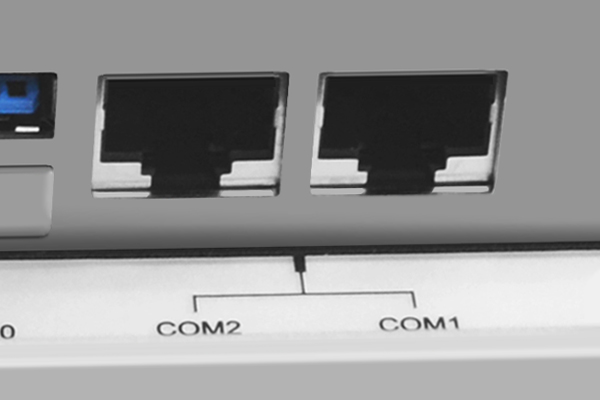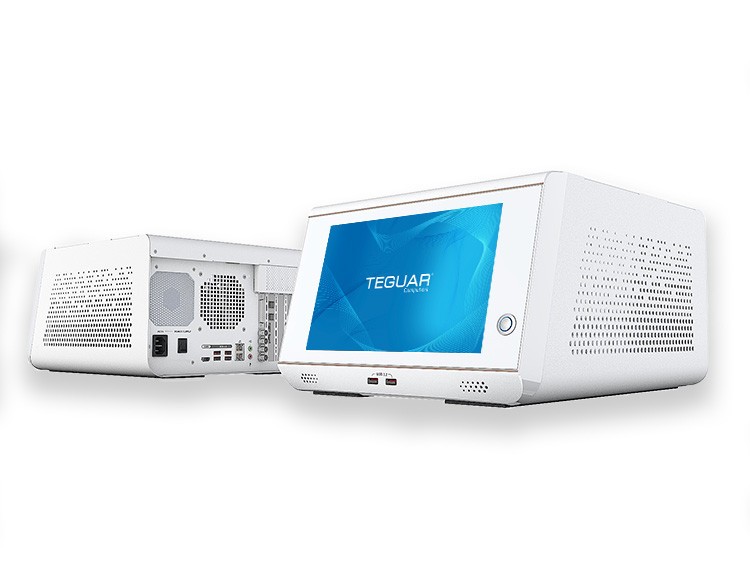Serial Ports Explained
Serial, COM and RS-232 are often used interchangeably, but what do they really mean and how are they different? Here’s a quick and clear overview on serial ports.
What is a Serial Port?
“Serial port” is the generic term that refers to any port that sends data in a serial fashion. However, the term is almost always used to refer to a COM port (usually RS-232, sometimes RS-485/422). USB and Ethernet ports also send data in a serial fashion, but no one refers to these as serial ports.

Serial Port vs COM Port
COM is what Windows calls a serial port. Meaning that the software refers to serial ports by names such as “COM1, COM2, and COM3.” COM is simply short for communication. The overall meanings of serial and COM are the exact same in most conversation. On a technical level, serial is the hardware component, COM is the software identifier for it.

What is DB-9?
DB-9 refers to the specific layout of the pins in a serial port. Almost all serial ports are DB-9 style. RJ-11 is another type of layout and it has the same functionality as DB-9, but looks different and is a little smaller. So you might ask, why does Teguar provide computers with RJ-11 style serial ports?
Our TP-4040 series comes standard with RJ-11, because RJ-11 is typically used in Point-of-Sale (POS) systems, which is an application for these industrial computers. However, since these computers are commonly used for manufacturing, logistics, inventory, and other applications besides POS, Teguar provides RJ-11 to DB-9 converters with these computers (qty 2) because RJ-11 is so uncommon in industrial applications.

RS-232 vs RS-485 vs RS-422
RS-232, RS-485 and RS-422 are protocols that specify how the electrical signals are sent out, coded and decoded to be understood by the computer. There are other protocols besides these three, but 232, 485 and 422 are by far the standard and most commonly used protocols on equipment.
RS-232 is the most commonly used, so much so that when someone says “serial port” they are expecting it to support RS-232. It is the only standard that is implied. RS-232 can only connect a single device and at a distance of less than 50ft. These are its major limitations. If you have one device less than 50 ft away, you will use RS-232. Common applications are printers, scanners, and a mouse.
RS-232 ports require 8 pins, whereas 422 and 485 only require 2 or 4 pins, so they are sometimes referred to as “2 pin COM ports.”
RS-422 can connect devices at a much greater distance. Technically, RS-422 can transmit data up to 4,900 ft (1,500 meters), but most cables don’t run over 500 feet. RS-422 is generally used to connect to a single device also, but the type of information sent back and forth is simpler than that of the RS-232 protocol. Examples are an on/off switch for lights and a temperature sensor.
RS-485 allows connection of up to 32 devices in a daisy chain fashion. So if you need to connect a bunch of things to 1 port, you should use an RS-485.
In summary,
RS-232 is used for one complex device,
RS-422 is used for one simple device at a long distance, and
RS-485 is used for multiple devices.
How to Change RS-232, RS-422 and RS-485 Protocols
On many Teguar computers, one serial port supports all three protocols, and the rest of the serial ports support only 232. Some devices, like tablets and a few of our panel PCs, have serial ports that are only 422 or only 485.
Depending on the computer, the protocols can either be changed via jumpers or in the BIOS. Several of our Panel PCs have jumpers on the motherboard that must be changed to change the protocols, but most of our computers have the option in the BIOS with no physical jumpers on the board.
Serial Port vs USB Port
USB ports have a much simpler design than serial ports, which means there are less things that could potentially fail. USB ports also don’t require drivers and they are easier to customize and configure. This makes it easy to directly integrate a customer’s end device with the computer.

Conclusion
Whether you say “serial,” “COM” or “RS-232,” most people will understand what you’re talking about. If you have a more unique application involving greater distance between devices or many devices, you may need RS-422 or RS-485. When it comes to layout, DB-9 is by far the most common. You’ll find RJ-11 on some Teguar computers, but these computers come standard with DB-9 to RJ-11 converters.
If you’re not sure what type of serial port you need, don’t worry. Teguar representatives are highly knowledgeable and will discuss your project with you to find the right solution. We also have a demo process available, so you can test our computers in your application. Contact us today to get started.
Previous Article
Product Review of Teguar’s TB-5545-MVS Box PC from RuggedPCReview












